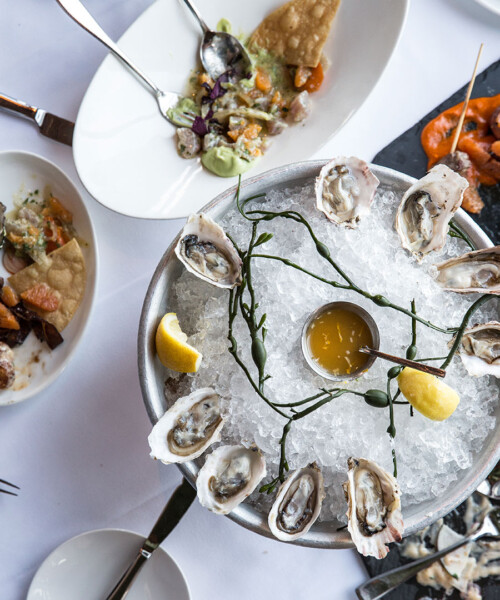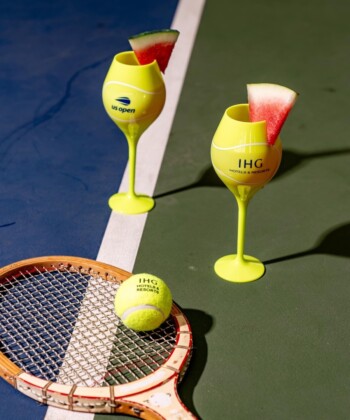Raw, fried, baked, smoked, steamed or stuffed, there’s no shortage of ways to enjoy oysters. To mark the start of oyster season, DuJour tapped three bivalve experts from around the country—Erin Byers Murray, Nashville-based food writer and author of Shucked: Life on a New England Farm, Chef Ken Wiss of Brooklyn’s Marlow & Sons and Executive Chef Parke Ulrich of San Francisco’s seafood restaurant Waterbar—to dive deep and dish on tips and tricks for buying, preparing and serving the shellfish. “Everyone has an opinion on which is the best oyster. The best advice I give to anyone is eat a lot of oysters,” says Byers Murray. “Try them side by side, eat them dozens at a time and find the flavor you like best.”
1. Don’t let the long list of oysters on the menu fool you. There are only five species in the U.S.—the Eastern (or Virginica), European flats, Pacific (or Gigas), Kumamoto and Olympia. The flavors for each vary depending on where they’re grown. Generally speaking, East Coasters are more briny and sweet, while the West Coast shells tend to have a cucumber-melon flavor. Kumamoto and Olympia oysters have a distinct, peppery taste.
2. An old wives tale says that oysters should only be consumed in months that end in “R,” but all three experts agree—it’s strictly a myth. Because most oysters are farmed and can be shipped overnight, you can have a good oyster year-round without worrying whether or not they’re spawning, or how long they’ve been out of the water.
3. While oysters are safe to eat year-round, the sweet spot (or oyster season) falls between September and April. When the water temperature rises in the spring and summer months, the female oysters spawn. Come fall, the bivalves begin bulking up in preparation for winter, making their flavor more robust (depending on the flavor profile, sweeter or more briny).
4. When purchasing oysters: 1) Make sure the ice is fresh. Oysters shouldn’t be sitting in water. 2) Ensure the oysters are closed—open means they are no longer alive—and smell fresh. 3) Look for oysters that are heavy in relation to their size. If they’re light as a feather, it means there is no liquor (or juice) inside, and thus, have most likely been harvested a long time ago. 4) East Coast shells are flatter and smoother, whereas the West exhibit a deeper cup with a rougher, more fluted exterior.
5. People have historically doused oysters in cocktail sauce, because the sauce was intended to mask the funky shellfish flavor, which was due to lack of refrigeration. Today, lemon and mignonette enhance the flavor of the oyster by bringing out the salt and sweetness. The acidity in both balances the brininess. Byers Murray says, “For the purists out there, it’s just a squeeze of lemon or nothing at all.”
6. Shucking your own oyster? Make sure the knife is pointed, not round. Chef Ulrich recommends Dexter-Russell’s Boston ball shucker. He suggests putting the knife in the hinge (the pointed end where the shells come together) and then running it along the top shell to pop the oyster open. Avoid jamming the knife in.
7. The experts agree that oysters should be served chilled on crushed ice, paired with champagne, Sauvignon Blanc, a Pilsner or an oyster stout, which is brewed with fresh oysters. Opt for Flying Dog’s Pearl Necklace Oyster Stout made with Rappahannock River oysters.
8. Low in calories, and high in nutritional value, oysters are chock full of vitamins and minerals including protein, iron, omega-3 fatty acids, calcium, zinc and vitamin C.
9. Oysters can live up to twenty years and change their sex one or more times during their life span.
10. Not every oyster contains a pearl. When unwanted particles get trapped within the shell, the oyster produces nacre (a combination for calcium and protein), which, over time, produces a pearl.
MORE:
10 Things to Know About Caviar Life Lessons from a World-Renowned Chef How the World’s Best Chefs Cook Raw






































